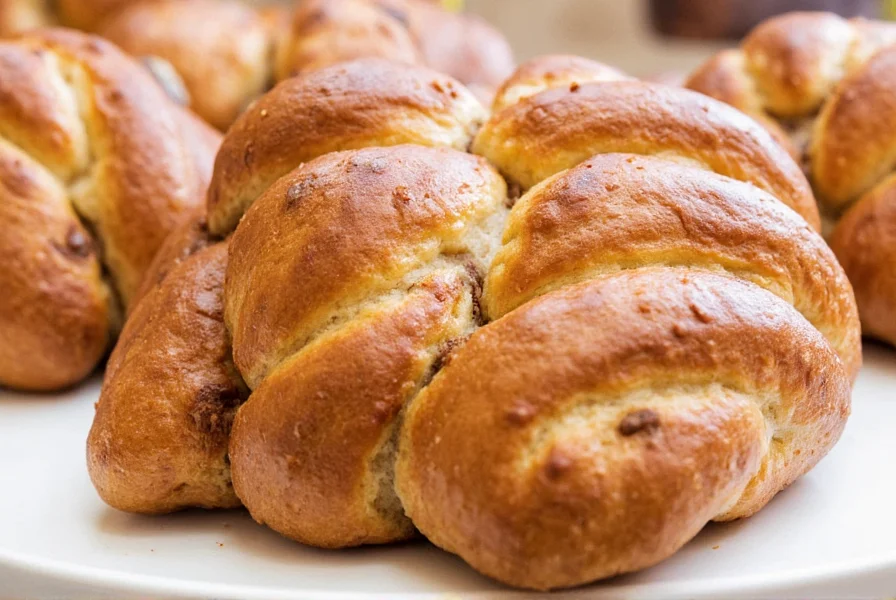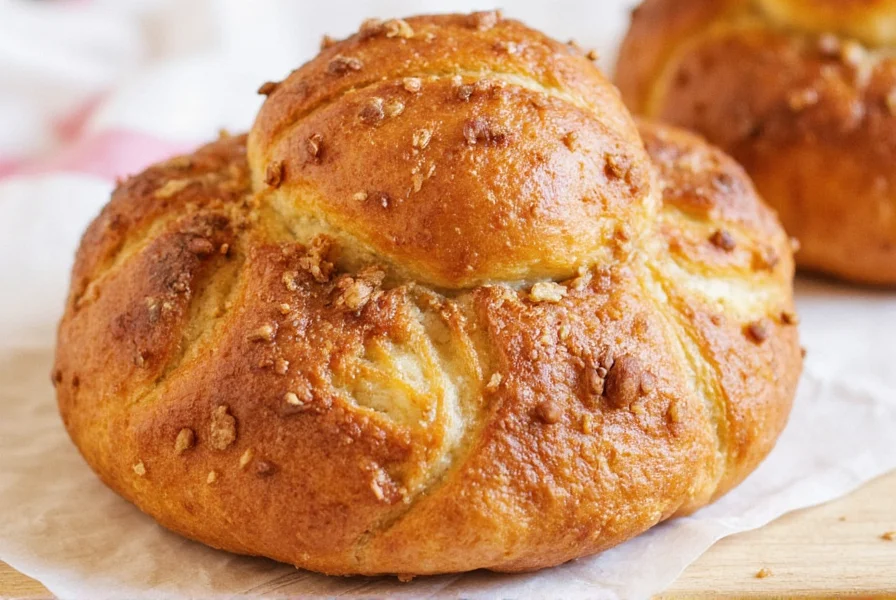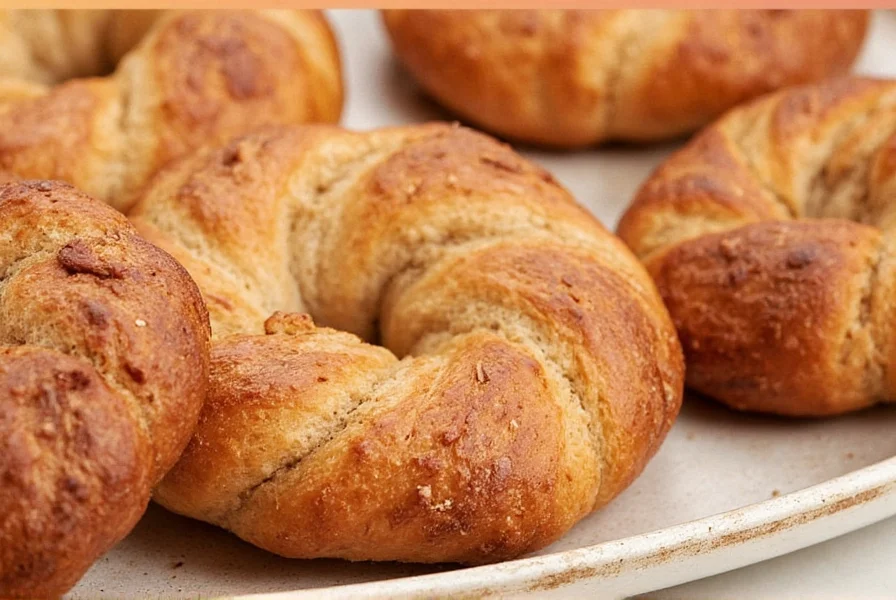Cinnamon babka represents one of the most cherished traditions in Jewish baking, with roots tracing back to 19th century Poland. This iconic pastry has evolved from humble Eastern European beginnings to become a globally celebrated treat, particularly popular in Jewish communities worldwide and increasingly in mainstream bakeries across North America and Europe.
The Historical Journey of Cinnamon Babka
The story of cinnamon babka begins in the shtetls (small Jewish towns) of Poland and Ukraine, where resourceful bakers transformed simple ingredients into extraordinary treats. Originally, babka (which means "grandmother" or "old woman" in Polish) wasn't the chocolate-swirled delight we know today. Early versions were simpler, often made with raisins or cinnamon as the primary flavoring.
During the mid-20th century, as Jewish immigrants brought their culinary traditions to America, babka underwent a transformation. The addition of chocolate became popular in American Jewish communities, creating the chocolate-cinnamon hybrid most commonly found today. However, traditional Polish-Jewish cinnamon babka remains a distinct variation that predates the chocolate version, featuring a pure cinnamon-sugar filling that showcases the spice's warm, complex flavor profile.
What Makes Cinnamon Babka Unique
Cinnamon babka stands apart from other sweet breads through several distinctive characteristics. Unlike challah, which is typically served plain or with minimal toppings, babka features an elaborate filling technique that creates its signature spiral pattern. Compared to marble cake, which mixes flavors throughout, babka maintains distinct layers of filling within the dough.
| Feature | Cinnamon Babka | Similar Pastries |
|---|---|---|
| Dough Type | Rich yeast dough with eggs and butter | Simpler yeast doughs (e.g., cinnamon rolls) |
| Filling Technique | Layered and twisted to create spiral pattern | Swirled but not twisted (cinnamon rolls) |
| Texture | Soft, cake-like crumb with defined swirls | Denser or more bread-like |
| Serving Tradition | Shabbat and holiday bread | Variably served as breakfast or dessert |
The traditional Polish-Jewish cinnamon babka recipe relies on a careful balance of ingredients that create its distinctive texture. High-protein bread flour provides structure, while the generous amount of butter and eggs creates richness. The cinnamon-sugar filling typically includes a mixture of ground cinnamon, sugar, and softened butter, sometimes enhanced with a touch of espresso powder to deepen the flavor without adding chocolate.
Mastering the Cinnamon Babka Swirl Technique
One of the most challenging yet rewarding aspects of making authentic cinnamon babka is achieving the perfect swirl pattern. Professional bakers emphasize several key techniques for cinnamon babka baking tips that ensure beautiful results:
First, the dough must be rolled to an even thickness—typically about 12x16 inches—to ensure consistent filling distribution. The cinnamon-sugar mixture should be generously applied but not so thick that it prevents the dough from sealing properly. When rolling the dough into a log, applying gentle but firm pressure creates tighter swirls that hold their shape during baking.
The twisting technique represents the true artistry of babka making. After rolling the filled dough into a log, skilled bakers cut it lengthwise and twist the two halves together before placing it in the pan. This creates the signature spiral pattern visible when sliced. For optimal results, many traditional bakers recommend using a light egg wash before baking to achieve that characteristic glossy finish on cinnamon babka.

Regional Variations and Modern Interpretations
While traditional Polish-Jewish cinnamon babka remains popular, regional variations have emerged as the pastry gained international recognition. In Israel, babka has become a national favorite, often sold in specialty bakeries with both chocolate and pure cinnamon versions. American interpretations sometimes incorporate additional elements like streusel topping or a sweet glaze, though purists argue these additions stray from the authentic experience.
Understanding cinnamon babka vs chocolate babka reveals interesting cultural preferences. In Eastern Europe, the original cinnamon version predominated, while chocolate became popular in America as an adaptation to available ingredients and evolving tastes. Today, many bakeries offer both options, with cinnamon babka appealing to those who prefer a more subtle, spice-forward flavor profile without the richness of chocolate.
Preserving Authenticity While Adapting to Modern Tastes
As babka's popularity has grown, maintaining authenticity while accommodating modern dietary preferences presents both challenges and opportunities. Traditional babka contains significant amounts of sugar and fat, contributing to its irresistible texture and flavor. However, contemporary bakers have developed adaptations that preserve the essence of cinnamon babka while addressing various dietary needs.
For those seeking to make soft cinnamon babka with extended freshness, proper storage techniques prove essential. Authentic babka maintains its optimal texture for 2-3 days at room temperature when stored in an airtight container. Freezing sliced babka is an excellent option for longer preservation, with the pastry thawing beautifully while retaining its distinctive swirl pattern and flavor.

Where to Experience Authentic Cinnamon Babka
Finding authentic babka requires knowing where to look, as commercial versions often lack the complexity of traditional preparations. While "where to buy authentic babka" might be a common search, the most genuine experiences come from specialty Jewish bakeries, particularly those operated by families with Eastern European heritage.
In major cities with significant Jewish populations—such as New York, Chicago, and Montreal—traditional bakeries continue the century-old practice of hand-rolling babka according to time-honored methods. These establishments often produce babka early in the morning for Shabbat observance, resulting in the freshest possible product on Fridays. For those outside these communities, seeking out bakeries that specifically mention Polish or Ukrainian heritage in their descriptions increases the likelihood of finding traditional cinnamon babka rather than modern interpretations.
Common Challenges in Babka Making and Solutions
Even experienced bakers encounter challenges when attempting traditional cinnamon babka. Understanding these common issues helps both novice and experienced bakers achieve better results:
- Filling leakage: Using melted butter in the filling rather than softened butter helps prevent leakage during baking
- Dense texture: Proper yeast activation and adequate rising time are crucial for achieving the characteristic light crumb
- Uneven swirls: Rolling the dough to consistent thickness and applying filling evenly prevents gaps in the spiral pattern
- Dryness: Using bread flour rather than all-purpose flour helps maintain moisture in cinnamon babka
For those wondering about the best flour for cinnamon babka, bread flour's higher protein content creates the ideal structure to support the rich filling while maintaining a tender crumb. The gluten development from bread flour also helps contain the filling during the baking process, preventing the common issue of filling leakage that plagues many babka attempts.
The Enduring Appeal of Cinnamon Babka
Cinnamon babka's journey from Eastern European shtetls to global bakery shelves represents more than just culinary evolution—it embodies cultural preservation through food. Each swirl of cinnamon filling tells a story of adaptation, resilience, and the enduring power of tradition. Whether enjoyed as a Shabbat treat, a holiday specialty, or simply as a weekend indulgence, authentic cinnamon babka connects eaters to a rich cultural heritage while satisfying the universal craving for comforting, aromatic baked goods.
Frequently Asked Questions
What's the difference between cinnamon babka and chocolate babka?
Traditional Polish-Jewish cinnamon babka features a pure cinnamon-sugar filling without chocolate, while chocolate babka incorporates chocolate in the filling. Cinnamon babka has a lighter, more spice-forward flavor profile, whereas chocolate babka offers richer, deeper notes. Historically, cinnamon babka predates the chocolate version, which became popular among Jewish immigrants in America.
How do you keep cinnamon babka moist after baking?
To maintain moisture in cinnamon babka, store it in an airtight container at room temperature for 2-3 days. The high butter content in traditional recipes helps retain moisture. For longer storage, slice the babka and freeze individual portions, which can be thawed at room temperature while preserving the delicate texture and swirl pattern.
Why does my babka collapse after baking?
Babka collapse typically occurs when the dough hasn't risen sufficiently before baking or when the oven temperature is too high. Ensure proper first rise (until doubled) and second rise (until puffy but not doubled). Baking at 350°F (175°C) rather than higher temperatures helps babka maintain its structure while developing the characteristic golden crust.
Can I make cinnamon babka without a stand mixer?
Yes, traditional cinnamon babka can be made entirely by hand. While a stand mixer simplifies the process, skilled bakers have made babka for generations using only hand-kneading techniques. The key is developing sufficient gluten through thorough kneading (about 15-20 minutes by hand) until the dough becomes smooth and elastic, passing the windowpane test.
What makes babka different from regular cinnamon rolls?
Babka differs from cinnamon rolls in several key ways: it uses a richer yeast dough with more eggs and butter, features a distinctive twisted spiral pattern rather than simple rolls, has a cake-like rather than bread-like texture, and is traditionally served as a pull-apart loaf rather than individual rolls. Authentic babka also typically contains less sugar in the dough itself, with sweetness concentrated in the filling.











 浙公网安备
33010002000092号
浙公网安备
33010002000092号 浙B2-20120091-4
浙B2-20120091-4